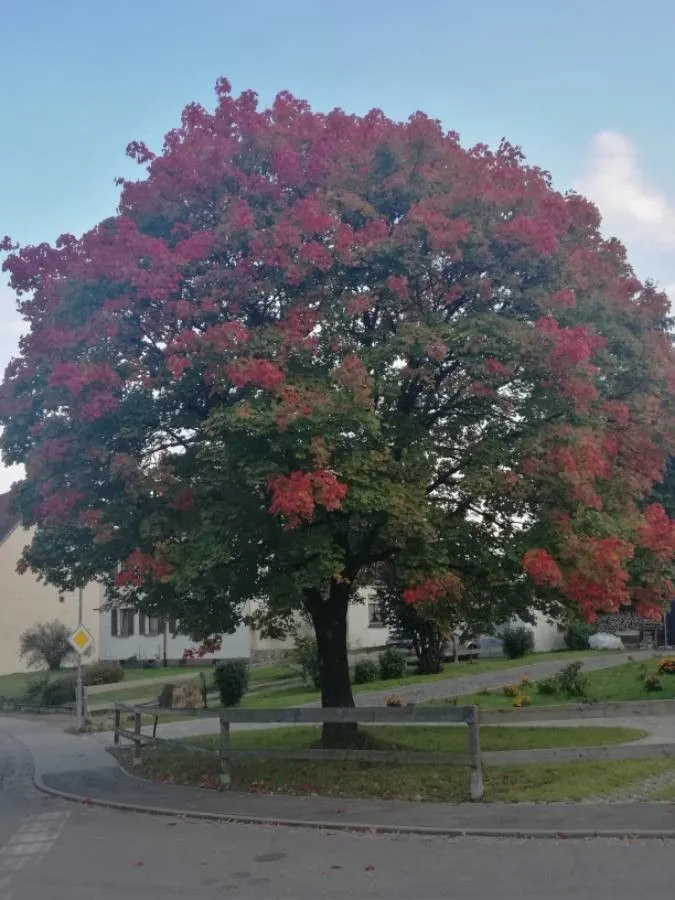
Author: L.
Bibliography: Sp. Pl.: 1055 (1753)
Year: 1753
Status: accepted
Rank: species
Genus: Acer
Vegetable: False
Observations: E. Canada to C. & E. U.S.A.
The Red Maple, scientifically known as Acer rubrum, is a prominent and versatile deciduous tree that is native to the eastern and central regions of the United States as well as eastern Canada. Known for its striking and vibrant red foliage in the autumn, the Red Maple offers a stunning visual display that has made it a popular choice for ornamental planting in both urban and rural landscapes.
Red Maple trees typically thrive in a variety of habitats, ranging from wetland areas to dry, upland regions. This adaptability is one of the reasons for their widespread distribution across a considerable geographic range. The tree is especially notable for its ability to tolerate a variety of soil types, which include both acidic and alkaline varieties.
The leaves of the Red Maple are another distinguishing feature. These leaves are typically 2 to 6 inches long and wide, featuring a characteristic three-lobed shape with a serrated margin. In spring, the tree produces small, red flowers that appear in dense clusters before the leaves fully develop, adding an early splash of color to landscapes. By the time autumn arrives, the leaves turn brilliant shades of red, orange, or even yellow, offering one of nature’s most impressive seasonal transformations.
This tree is also recognized for its smooth, light gray bark when it is young, which becomes darker and more fissured with age. The wood of the Red Maple is valued for its versatility and is used in the furniture and flooring industries, although it is somewhat softer than sugar maple wood.
Ecologically, the Red Maple plays a crucial role in its native habitat. It provides food and shelter for a variety of wildlife species and its nectar is an early source of food for bees and other pollinators in the spring. Additionally, the tree’s seeds, which are contained in samaras (commonly known as “helicopter seeds” due to their distinctive two-winged shape), provide a food source for numerous birds and small mammals.
First described by the acclaimed botanist Carl Linnaeus in his seminal work “Species Plantarum” in 1753, the Red Maple has been a subject of admiration and study for centuries. Its hardiness, aesthetic appeal, and ecological importance make Acer rubrum a tree of significant interest both to botanists and landscape enthusiasts alike. The Red Maple, part of the Sapindaceae family, continues to be celebrated and widely planted, cementing its status as a beloved symbol of seasonal change.
Eng: maple, red maple, scarlet maple, soft maple, swamp maple
Deu: rot-ahorn, rotahorn, roter ahorn
Ita: acero rosso
Swe: rödlönn
Por: ácer-do-pântano, ácer-rubro, ácer-vermelho
Fra: érable rouge, plaine, plaine rouge
En: Red maple, Maple, Scarlet maple, Soft maple, Swamp maple
Nl: Rode Esdoorn
Fr: Érable rouge, Plaine, Plaine rouge, Érable de Virginie
De: Rotahorn, Rot-Ahorn, Roter Ahorn
It: Acero rosso
Pt: Ácer-do-pântano, Ácer-rubro, Ácer-vermelho
Es: Arce rojo
Sv: Rödlönn
Taken May 7, 2021 by Botanist Massachusetts (cc-by-sa)
Taken May 10, 2021 by Marilyse Goulet (cc-by-sa)
Taken Apr 27, 2019 by Emilio Herrero (cc-by-sa)
Taken Oct 24, 2005 by Andrzej Konstantynowicz (cc-by-sa)
Taken May 31, 2020 by philip beef (cc-by-sa)
Taken Nov 7, 2019 by Annerieke Smits (cc-by-sa)
Taken Nov 13, 2022 by david delamarre (cc-by-sa)
Taken Nov 2, 2021 by Vaquero Pinar (cc-by-sa)
Taken Sep 26, 2017 by Dieter Albrecht (cc-by-sa)
Taken May 31, 2020 by philip beef (cc-by-sa)
Taken Oct 25, 2015 by Tela Botanica − Alain BIGOU (cc-by-sa)
Taken Oct 12, 2015 by EOL − Charlie Hohn (cc-by-nc)
Taken Oct 29, 2019 by Interior Design Mimar (cc-by-sa)
Taken Sep 26, 2017 by Dieter Albrecht (cc-by-sa)
Taken Sep 26, 2017 by Dieter Albrecht (cc-by-sa)
Taken Oct 9, 2020 by Ondrej (cc-by-sa)
Taken Oct 2, 2018 by Keith Gebhardt (cc-by-sa)
Taken Nov 7, 2022 by John Wright (cc-by-sa)
Taken Sep 9, 2021 by sananab (cc-by-sa)
Taken Sep 9, 2021 by sananab (cc-by-sa)
Taken Mar 9, 2008 by Henk Van Lottum (cc-by-sa)
Taken Jan 20, 2019 by Annemarie Ahrens-Stehle (cc-by-sa)
Taken Mar 13, 2016 by EOL − Matthew O’Donnell (cc-by-nc-sa)
Taken Oct 30, 2020 by Vinny M (cc-by-sa)
Taken Apr 3, 2016 by EOL − Robert L Curtis (cc-by-nc-sa)
Taken Nov 5, 2020 by Hélène ricquier (cc-by-sa)
Taken Jul 31, 2022 by Pierre Bissey (cc-by-sa)
Taken Apr 10, 2019 by Carlos Carlos Fonseca (cc-by-sa)
Taken Oct 5, 2013 by Tela Botanica − Michou Jibo (cc-by-sa)
Taken Sep 13, 2021 by Magnus Onu (cc-by-sa)
© copyright of the Board of Trustees of the Royal Botanic Gardens, Kew.
© copyright of the Board of Trustees of the Royal Botanic Gardens, Kew.
© copyright of the Board of Trustees of the Royal Botanic Gardens, Kew.
Growth form: Single Stem
Growth habit: Tree
Growth rate: Rapid
Ph maximum: 7.3
Ph minimum: 4.7
Light: 7
Atmospheric humidity: 5
Soil nutriments: 5
Family: Myrtaceae Author: (F.Muell.) K.D.Hill & L.A.S.Johnson Bibliography: Telopea 6: 402 (1995) Year: 1995 Status:…
Family: Rubiaceae Author: Pierre ex A.Froehner Bibliography: Notizbl. Bot. Gart. Berlin-Dahlem 1: 237 (1897) Year:…
Family: Sapindaceae Author: Koidz. Bibliography: J. Coll. Sci. Imp. Univ. Tokyo 32(1): 38 (1911) Year:…
Family: Asteraceae Author: A.Gray Bibliography: Pacif. Railr. Rep.: 107 (1857) Year: 1857 Status: accepted Rank:…
Family: Fabaceae Author: Medik. Bibliography: Vorles. Churpfälz. Phys.-Ökon. Ges. 2: 398 (1787) Year: 1787 Status:…
Family: Aspleniaceae Author: (Cav.) Alston Bibliography: Bull. Misc. Inform. Kew 1932: 309 (1932) Year: 1932…